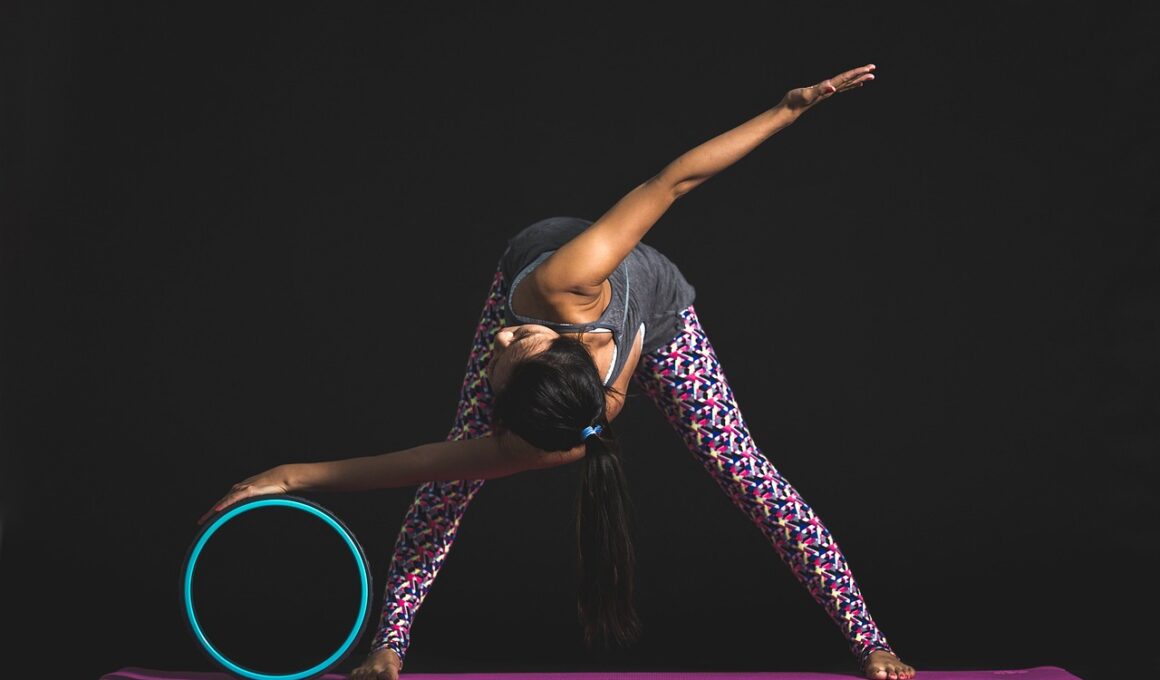How to Safely Incorporate Yoga into Your Postpartum Routine
Postpartum fitness is a critical aspect of recovery after childbirth. Engaging in safe exercises like yoga can enhance both physical and emotional well-being. Begin by consulting with your healthcare provider to ensure you’re ready for physical activity. Your body undergoes significant changes during pregnancy and delivery, and ensuring safety in your workouts is paramount. When you start yoga, consider the levels of intensity and choose postures that align with your recovery stage. Some gentle poses can alleviate tension, while others may be too demanding initially. Focus on stretching and breathing techniques to help ease tension in muscles strained during labor. The goal is to reconnect with your body while honoring its limitations. Avoid pushing yourself into challenging poses, as this could lead to injury. Join postpartum-focused yoga classes if possible, as they often provide tailored instructor guidance. Always listen to your body and adjust movements according to how you feel. Remember, this is a time of healing, and every small step counts towards your overall fitness journey.
Once you feel ready to begin your postpartum yoga journey, it’s essential to create a conducive environment. Consider finding a calm space in your home or a local studio that offers supportive postpartum classes. Good lighting and a quiet atmosphere can facilitate relaxation and focus during practice. Having the right equipment is also important: a quality yoga mat, blocks, straps, and cushions can enhance comfort. Dress in breathable, comfortable clothing that allows for unrestricted movement during stretches. This practice should prioritize your body’s current needs while gently rebuilding strength and flexibility. Practice mindful breathing techniques to help connect body and mind. Guided sessions can help you learn to flow from one pose to another smoothly. Engage your pelvic floor and core muscles while transitioning between positions, as this helps in alignment and stability. Yoga offers a great opportunity to refocus your attention away from daily stresses while promoting self-care. Lastly, consider joining a community of mothers aiming to maintain their fitness together. Sharing experiences can bolster motivation and foster friendships.
Essential Safety Considerations
Always be aware of safety guidelines to prevent complications during postpartum workouts. As you start yoga, pay attention to how your body responds to different positions and what feels comfortable or uncomfortable. Avoid any poses that cause pain or excessive strain, particularly those involving twists or heavy shoulder weights. Engaging in deep consideration of your body’s signals can vastly improve your experience; don’t hesitate to modify poses to suit your current abilities. Furthermore, recognize that postpartum recovery is not linear and varies for each individual. Consult with professionals if you encounter persistent discomfort or other concerns. Communicating with healthcare providers helps ensure that your approach aligns with proper recovery protocols. It is vital to practice yoga as an extension of your self-care routine rather than an obligation. This perspective allows you to remain flexible with your goals. Hydration is equally as essential during workouts. Drink water before, during, and after yoga sessions to stay hydrated. Hydration contributes to overall energy levels, especially as your body adapts post-delivery.
In addition to paying attention to your body’s signals, incorporating a supportive group can significantly enhance the quality of your postpartum fitness. Working out with friends or in classes specifically designed for new mothers can provide encouragement and motivation. Being part of a community fosters accountability and boosts morale, leading to a sustained desire to continue with your workout. When surrounded by others who share similar experiences, you can learn valuable tips and improve your practices. Sharing yoga techniques and personal stories can enrich your journey, making it less isolating. Consider taking classes that incorporate baby-friendly workouts to involve your infant, allowing you to bond while practicing yoga. This can create adorable moments and also teach them about movement and balance. However, ensure that the poses you execute are safe for both you and your baby. Additionally, consider finding online platforms that offer postpartum workouts if in-person classes don’t fit into your schedule. This flexibility enables you to prioritize self-care and health without feeling overly constrained or pressured.
The Importance of Core and Pelvic Floor Strength
One key focus area in postpartum yoga is rebuilding core and pelvic floor strength. Pregnancy and childbirth can weaken these muscles significantly. Hence, incorporating specific exercises targeted towards these areas will prove beneficial. Begin slowly, focusing on reclaiming a sense of stability and control over your midsection. Poses like Cat-Cow, Bridge, and supported Squats help strengthen the pelvic floor while also enhancing overall stability. As you progress, challenge yourself gradually while being mindful of limits. Include breathing techniques that enhance core engagement, as this will aid in muscle recovery. Avoid doing advanced inversions or activities that place undue stress on your abdomen. Adequate core support can improve posture, alleviate back pain, and foster better body mechanics in daily life. Engaging in yoga that emphasizes core strength can also lead to greater comfort as you navigate daily activities with your baby. Moreover, strengthening these muscles can lead to more natural recovery post-delivery. Always ensure that the movements are performed mindfully and at your own pace.
Another significant aspect of postpartum yoga is the integration of mindfulness and relaxation. Incorporating mindful practices can help reduce anxiety and promote emotional well-being while navigating the postpartum phase. Focus on your breath, allowing yourself to be present during each yoga session. Consider the power of deep breathing as an efficient method for releasing tension that may build up throughout the day. Techniques like Diaphragmatic Breathing can bring balance to your autonomic nervous system, helping you feel more relaxed. Mindfulness practices integrated into your yoga sessions lead to enhanced emotional resilience and improved coping mechanisms. Yoga Nidra or guided meditation in yoga classes foster relaxation while helping you reconnect emotionally post-childbirth. This is an essential investment in your mental health, ultimately leading to better interactions with your baby and family. Embracing a holistic approach that combines physical and emotional wellness enhances the overall postpartum recovery process. Therefore, find ways to make mindfulness a regular part of your practice, anchoring yourself amidst the challenges of early motherhood.
Conclusion
In conclusion, safely incorporating yoga into your postpartum routine requires patience, mindfulness, and a willingness to learn. Start slowly, listen to your body, and gradually ramp up your practice in accordance with how you feel. Establishing a comfortable setting, choosing the right classes, and staying hydrated ensures a smooth transition into this enriching form of exercise. Building community support can further enhance your experience, making the process less daunting and more enjoyable. Always prioritize core and pelvic floor strengthening exercises in your routine, as these are vital for recovery. Finally, embrace mindfulness and relaxation techniques to support your emotional well-being during this period. All these elements work together to not only promote better physical health but also foster a positive mindset. Remember that postpartum fitness is a journey, and each person’s path is distinct. Adapt your practices to fit your unique circumstances. Aim for consistent participation, allowing yoga to be a cherished part of your daily life and an investment in yourself and your new family.


